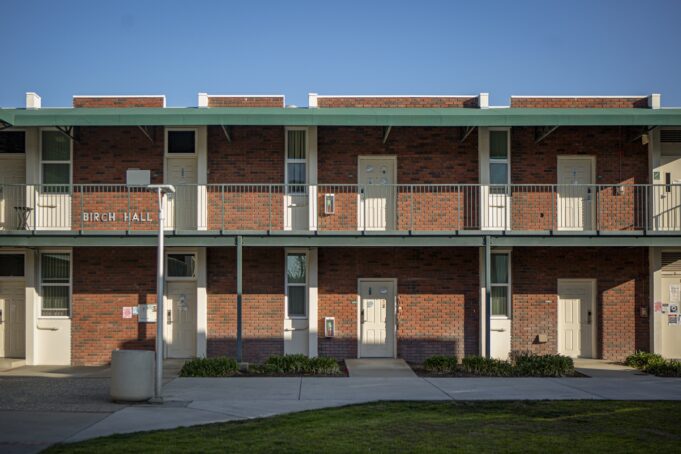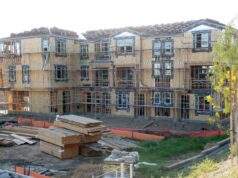Mikhail Zinshteyn | CalMatters
What a difference $1 billion makes.
An estimated 3,800 more college students will soon have affordable campus housing after state lawmakers and Gov. Gavin Newsom agreed to pump a portion of California’s $300 billion budget into a student program to ease a residential crisis gripping the state’s public universities and community colleges.
All told, $1.4 billion is heading to 26 public campuses this year to build or expand dorms, a tripling of the original plan to send $470 million to just nine campuses . Once the structures are complete — some of which are scheduled to open in two years — about 7,300 students will have access to beds at ultra-low rents.
Yet the extra beds represent a pittance of the true need for students battling unstable housing, given that hundreds of thousands of college learners in California experience homelessness, couch surf, change addresses often or struggle to pay rent — all major impediments to thriving in school. Meanwhile, California’s public universities annually report thousands of students on waiting lists for campus housing.
Still, even more affordable units may be on the way.
The budget deal between Newsom and lawmakers calls for spending another $750 million on housing development grants next year, but the money would have to appear in next year’s budget.
Also in the budget deal is a promise to fund $1.8 billion in interest-free loans that the state would issue to campuses to build student and employee housing, an idea that’s been long in the making . The plan is for lawmakers to approve $900 million next year and again the year after that for the loan program to take off.
That lawmakers are interested in financing student housing at all is new. Last year was the first time they approved major state funding to build student homes and ensure that campuses keep the rents low. The building splurge adds to the hundreds of millions in new spending on financial aid that lawmakers approved over the past two years, including:
–A down payment on a debt-free grant for University of California and California State University students.
–Up to $8,000 in cash support for some community college students.
–A major expansion of how many community college students get that cash support and tuition waivers to attend a UC or Cal State school.
Where will the beds be?
The housing projects funded this year are in rural and urban areas at UCs, Cal States and community colleges up and down the state.
College of the Siskiyous, the northernmost public campus in California, will build enough housing for about 252 affordable beds at a cost of $32 million in state grants. Fresno State is receiving $31 million from taxpayers for 175 affordable beds; the campus only has 1,100 campus beds for its 25,000 students, most of whom are low-income. UC San Diego will use $100 million in state funds for 1,100 beds that’ll have a rent of about $832 a month — or roughly half of what similar rents go for off-campus, university documents state.
The construction costs for the 25 discounted-rent projects range in price from $91,000 per bed to more than $600,000 per bed.
The definition of an “affordable bed” will vary by campus. That’s because the housing program funding the construction projects requires annual rent not to exceed 15% of a county’s median wage for a single person. In Los Angeles and San Diego, that means rents of roughly $800 to $930 a month, respectively, in 2022. At UC Berkeley, it’s closer to $1,250 a month .
Beyond enjoying cheaper rents, students living on campus have slightly higher chances of remaining enrolled in college and are more likely to interact with professors and their peers than students who live beyond walking distance from campus, according to academic studies .
In some cases, the state grant money will supplement a larger campus housing project. For example, UC San Diego is using its $100 million in grant funds toward its already planned $365 million dorm complex that will eventually provide 1,300 beds — 1,100 of which will be affordable through the grant.
How we got here
The affordable housing money is all tied to a student housing grant program lawmakers introduced last year. The grant funding replaces money campuses would otherwise have to borrow from financial institutions and repay with interest, which in turn leads to savings for campuses that are then passed onto students in the form of cheaper rent.
Lawmakers initially created a $500 million pot to go toward building new student beds this year through a competitive application process. But interest in the program far outstripped available funds last year, with 42 colleges and universities seeking $2.8 billion in construction grants. In March, the Department of Finance proposed awarding nine campuses a share of that $500 million — even after the agency determined another 17 campuses had valid applications.
At least one lawmaker representing the jilted schools bristled at losing out to the competitive grant process. “There’s none there for the Inland Empire,” said Jose Medina, a Democrat assemblymember from Riverside, during an April legislative hearing to review the Department of Finance’s recommended list of projects to fund.
Ultimately, Newsom and lawmakers decided to fund the 17 campuses with valid applications — plus the nine initially approved in March, bringing the pot of money up to $1.4 billion. Unfortunately for Medina and Riverside, the 2022-23 budget deal still doesn’t finance any construction project from the Inland Empire.
With Newsom and lawmakers signaling that more student housing construction dollars will appear in future state budgets, UC Riverside and the other passed-over campuses may get additional chances to secure money to expand their stock of affordable beds.
But legislation for the program suggests the state will only accept UC and Cal State applications next year if a new round of grant funding is approved . An official at the Department of Finance told CalMatters the intent is for campuses to apply by this October so that they’re approved in time for next year’s budget deal.











